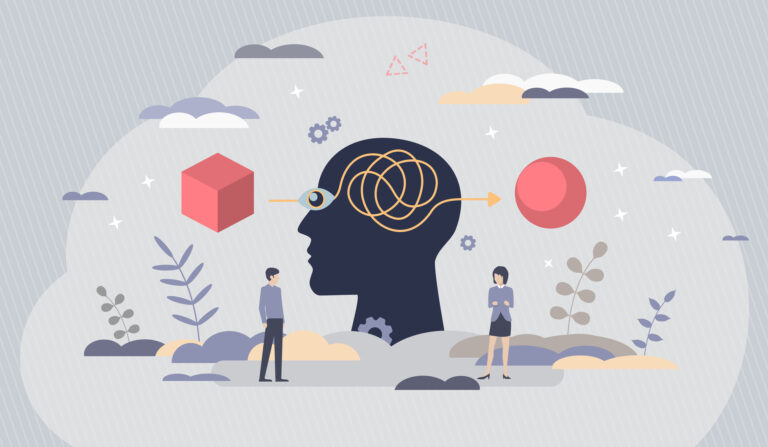More than a Door1 2
Removing Physical Barriers
There is perhaps no better-known set of accessibility features than the automated door and the ramp – both intended to ease the passage of especially those who mobility devices into a store, bank, or other retail location. Indeed, in conversation with client organizations, the subject of automatic doors is often at the forefront of initial conversations. Strikingly, this is a far less frequent conversation topic in the thousands of conversations RoDG has had with People with Disabilities. One could count on a single hand the number of stories we have heard about it being impossible to enter a building. Rather, the determinants of a positive or negative experience – or barriers to completing the experience at all – typically occur within retail settings, and are rarely an issue of “purely” physical access.
Conceptualizing and Quantifying Barriers
There is sometimes a misconception within accessibility as to what constitutes a barrier. While many of us may perceive a barrier as something insurmountable – something that literally breaks an experience, in accessibility the definition is often far broader, anything that prevents the full and equal participation of an individual in a given experience3.
With this more expansive definition in mind, RoDG has conducted survey research with over 1000 PWD asking about how frequently they experience barriers in their retail experiences. This survey, like all RoDG surveys, is based on conversations our analysts have had with thousands of PWD over the past 15 years.
When asked about barriers to entrances or exits, just over one quarter of PWD indicated that they often or always encountered barriers at entrances and exits4. Interestingly, this result was consistent across different types of disabilities. Indeed, qualitative studies of retail experiences have indicated that some of the most frequent barriers are not the existence (or functioning) of automatic doors, but rather if the entrance can be easily located in the first place. Conversely, 44% of surveyed PWD indicated that they rarely, or never, experience barriers entering or exiting retail locations. 29% of respondents indicated they sometimes experienced barriers entering or exiting stores.
Figure 1: How often do you encounter barriers entering or exiting stores/bank branches?

Accessibility in Store: Finding what you need
RoDG studies have consistently indicated consumers are more likely to face barriers once they are already past the entrance. The reason for this is probably quite simple: standard conceptions of accessibility rarely extend beyond automatic doors and ensuring websites meet compliance standards.
Some of the most common – and frequently overlooked – barriers in a retail experience are those pertaining to wayfinding: the ability to find the desired product or service quickly and efficiently. These barriers are also crucial: frustration caused by not being able to find a desired product quickly sours a customer experience, preventing repeat customers, and in some cases, exiting a retail location prior to an intended purchase.
In a study on barriers, RoDG found that nearly 29% of respondents often or almost always described locating goods/services as a frustrating experience, compared to a near identical 28% that described rarely or never having such frustration.5 44% of respondents – nearly half the sample – described that finding goods or services was frustrating sometimes. It should be emphasized that difficulty finding goods and services is not confined to those with limited vision.
Figure 2: Finding goods/services in stores is a frustrating experience

The reasons for this difficulty are multifaceted, from poor signage, to a lack of customer service staff. Often multiple factors interact to create either a delightful or awful experience, with the latter often causing customers to seek their retail experiences elsewhere.
Implications
There is a need for organizations to expand their conceptions of accessibility beyond the doorway, and instead to the everyday experience of navigating built environments. It is this navigation element – quickly and efficiently finding what you need – that allows top organizations to retain customers and create value. This need for efficiency is especially acute given competition from digital retailers, where finding a product is as simple as typing a keyword. Gone are the days of losing customers in a cavernous warehouse to make impulse purchases. Now is the time of efficient and delightful customer experiences. Customers choose in-person retail for a reason. Make it easy for them.
Accessibility of this document
This document respects various best practices regarding accessible documents, including our choice of typeface, type size, hue contrasts, margins, document structure, and heading styles.
- This document complies with all applicable EN 301 549, WCAG 2.0 and 2.1 Level A and Level AA guidelines for accessible digital documents. For alternative formats, contact Return on Disability at mark@rod-group.com. We always strive for plain language; however, we often cannot write about conformance and compliance using simpler language without losing critical meaning. ↩︎
- © The Return on Disability Group. All rights reserved. Access to this report and its contents is provided through a discreet contract between the company named in the report and The Return on Disability Group. Redistribution is prohibited unless provided in writing by both The Return on Disability Group and the named subscriber. The information contained herein is not represented or warranted to be accurate, correct, complete or timely. This report is for information purposes only and should not be considered a solicitation to buy or sell any security. ↩︎
- For example, see the Accessible Canada Act S.C. 2019, c. 10 ↩︎
- Return on Disability quarterly survey, second quarter 2022. N=1,002 self-identified PWD. ↩︎
- Return on Disability quarterly survey, second quarter 2022 ↩︎



